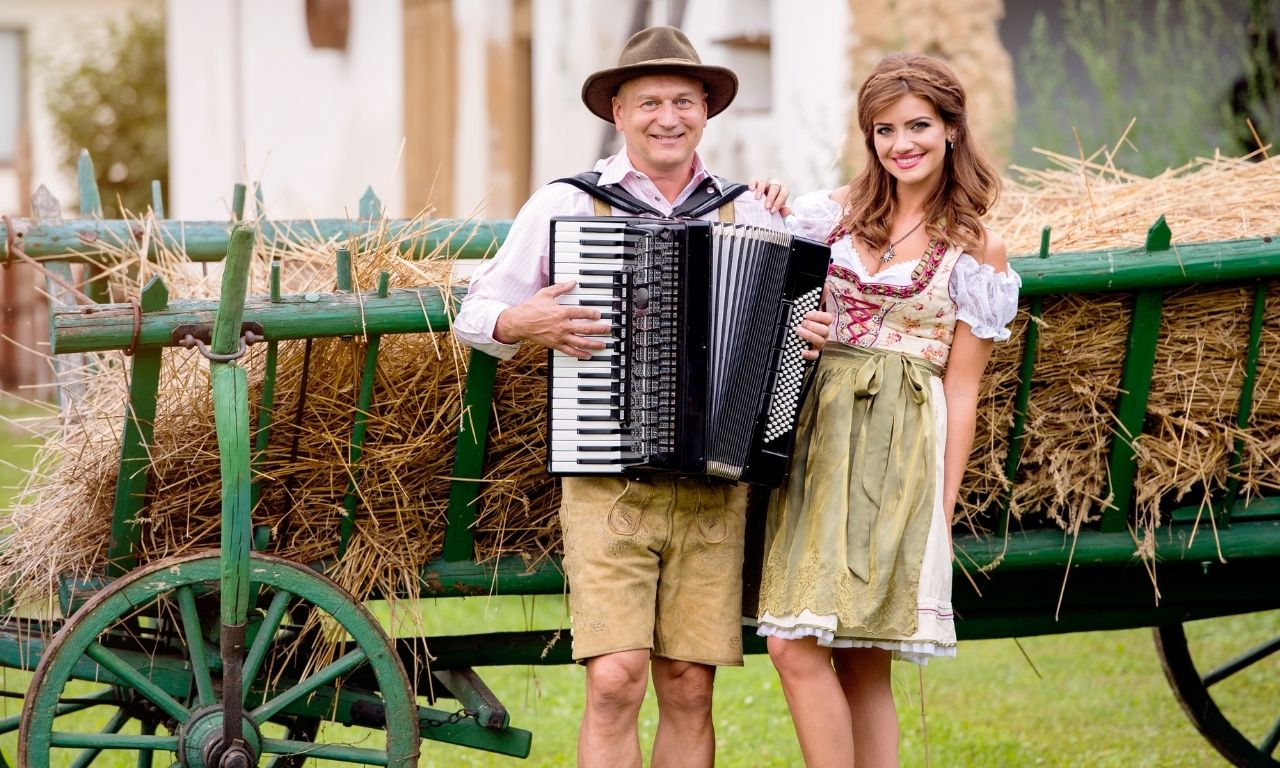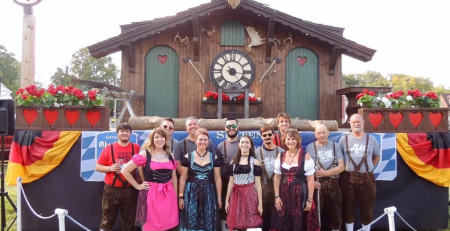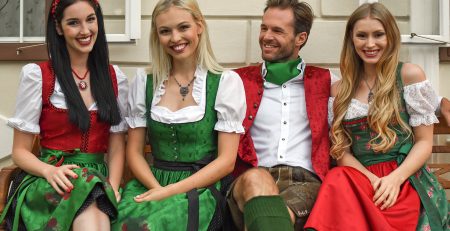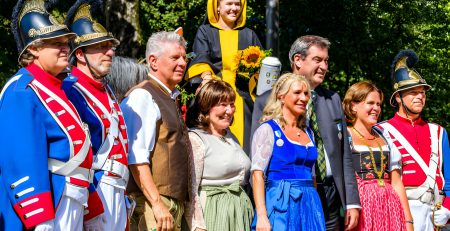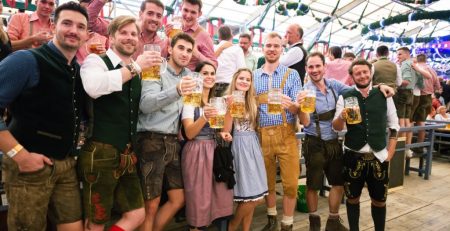Songs for Oktoberfest:The Ultimate Oktoberfest Playlist
Oktoberfest, the world-renowned beer festival originating from Munich, Germany, is not only famous for its beer, pretzels, and lederhosen but also for its vibrant music that echoes through beer tents and streets, creating an atmosphere of pure joy and festivity. Music is an integral part of this Bavarian tradition, setting the mood and bringing people together in celebration. In this comprehensive guide, we’ll dive into the essential songs for Oktoberfest, ensuring your playlist captures the spirit of this festive season.
The Heartbeat of Oktoberfest: Traditional Bavarian Music
At the core of any Oktoberfest celebration is traditional Bavarian music, which includes a mix of folk tunes, polkas, marches, and waltzes. These songs are not just background music; they are the heartbeat of the festival, played by live bands in large beer tents, inviting guests to clap, sway, and sing along.
“Ein Prosit der Gemütlichkeit” – The Toast of Oktoberfest
No Oktoberfest is complete without “Ein Prosit der Gemütlichkeit” (A Toast to Coziness). This short, catchy tune is played every 15 to 20 minutes in the beer tents, prompting attendees to raise their steins, toast to good health and happiness, and take a hearty swig of beer. The song’s simplicity and repetitive nature make it an instant sing-along hit, creating a unified experience for all.
“In München steht ein Hofbräuhaus” – Celebrating Munich’s Brewing Legacy
This folk song celebrates the famous Hofbräuhaus beer hall in Munich, a symbol of Bavarian beer culture. “In München steht ein Hofbräuhaus” is a lively tune that pays homage to the joy and camaraderie found within the iconic establishment, making it a perfect addition to your Oktoberfest playlist.
“Fliegerlied” – The Modern Oktoberfest Anthem
Also known as “So ein schöner Tag” (Such a Beautiful Day), “Fliegerlied” is a relatively new addition to the Oktoberfest repertoire but has quickly become a festival staple. Its catchy melody and easy-to-follow dance moves ensure that everyone, regardless of age or nationality, can join in on the fun.
Blending the Old with the New: Contemporary Hits and Party Favorites
While traditional tunes form the essence of Oktoberfest, contemporary hits and party classics are also integral to the festival’s lively atmosphere. These songs, often played later in the evening, keep the energy high and the beer tents buzzing.
“Rock Mi” by VoXXclub
This modern twist on traditional folk music by the band VoXXclub has become an Oktoberfest hit. “Rock Mi” blends elements of pop and electronic music with Alpine sounds, creating a dynamic and danceable track that brings a new level of excitement to the festivities.
“Cowboy und Indianer” by Olaf Henning
Also known as “Komm, hol das Lasso raus,” this catchy German pop song invites everyone to join in on the “lasso dance.” Its playful rhythm and easy-to-learn choreography make it a crowd-pleaser, perfect for adding a touch of whimsy to your Oktoberfest celebration.
“Hulapalu” by Andreas Gabalier
Blending traditional folk with modern pop, “Hulapalu” by Andreas Gabalier is a must-have on your Oktoberfest playlist. The song’s infectious beat and sing-along chorus make it impossible to stay seated, ensuring the party continues well into the night.
International Flavors: Adding Diversity to Your Oktoberfest Playlist
Oktoberfest attracts visitors from all around the world, and incorporating international hits into your playlist can make everyone feel welcome. Classic party songs that transcend language barriers, such as “Sweet Caroline” by Neil Diamond or “YMCA” by The Village People, are excellent choices for bringing diverse crowds together.
Setting the Mood: Ballads and Slow Songs
Amidst the lively tunes and energetic dances, slower songs and ballads have their place in the Oktoberfest lineup. These tunes offer a moment of respite and romance, allowing couples to enjoy a slower dance or a quiet conversation. Traditional Bavarian ballads or popular slow songs in German can add depth to your playlist, creating a well-rounded musical experience.
Tips for Creating the Perfect Oktoberfest Playlist
- Balance is Key: Combine traditional Bavarian music with modern hits and international classics to cater to all tastes.
- Know Your Audience: Tailor your playlist to the demographic of your party. A younger crowd may appreciate more contemporary and pop songs, while a more traditional audience might prefer folk tunes and classic Oktoberfest hits.
- Update Regularly: Keep your playlist fresh by adding new songs each year and removing any that didn’t resonate with your audience in the past.
- Volume Control: Ensure the music is loud enough to create an atmosphere but not so loud that it hinders conversation. The right volume encourages singing along and participation.
Duration and Variety: Create a playlist long enough to last the duration of your party without repeating songs too frequently. Include a mix of fast-paced tunes, dance hits, and slower ballads to keep the energy varied throughout the event.
Dances:
- Polka: The lively tempo of polka music is perfect for Oktoberfest. Basic polka steps are easy to learn and can be performed to many of the festival’s tunes.
- Waltz: A slower option for when the pace eases down. The traditional waltz is a beautiful dance to try with a partner as a more elegant option.
Schuhplattler: This traditional Bavarian folk dance involves clapping the hands and slapping the knees, thighs, and soles of the shoes. It’s more commonly performed by men but is a fun watch for everyone.
Creating Lasting Memories in Traditional Wear:
Wearing an Oktoberfest outfit to an Oktoberfest-themed party or during the Oktoberfest festival in Munich is not strictly essential, but it is highly encouraged and contributes significantly to the overall experience. The traditional attire, such as Lederhosen for men and Dirndls for women, is a hallmark of the festival and helps create a festive and authentic atmosphere.
Here are a few reasons why wearing an Oktoberfest outfit can enhance your experience:
- Cultural Immersion: Dressing in traditional Bavarian attire allows you to fully immerse yourself in the culture and traditions of the festival. It shows respect for the customs and helps you blend in with the locals and other festival-goers.
- Festive Spirit: Wearing a Dirndl or Lederhosen adds to the festive spirit and can make the experience more enjoyable and memorable. It’s a fun way to participate actively in the celebration, and you’re likely to feel more involved in the festivities.
- Social Interaction: Donning traditional attire can also be a great conversation starter and can lead to social interactions with other attendees. It shows that you are participating wholeheartedly, which can lead to making new friends and having a more engaging experience.
- Photographic Memories: Oktoberfest is a memorable event, and wearing traditional clothing can make your photos even more special and unique. It’s a way to capture the essence of the festival and have souvenirs that reflect the true Oktoberfest spirit.
Tradition and Respect: By wearing traditional attire, you pay homage to the Bavarian customs and traditions. It’s a sign of respect towards the host city and the historical aspects of the festival.
Conclusion: Embracing the Oktoberfest Spirit
Oktoberfest is a time to celebrate Bavarian culture, and what better way to do so than by donning traditional attire and dancing to classic tunes? Whether you’re attending a local Oktoberfest party or the original celebration in Munich, dressing in a Lederhosen or Dirndl will enhance your experience and make you feel part of the festivities. Remember, Oktoberfest is not just about how you look or the music you dance to; it’s about the spirit of community, tradition, and, of course, enjoying a good beer. So put on your festive outfit, practice your dance moves, and get ready to sing along to the tunes that give Oktoberfest its lively atmosphere. Prost!

